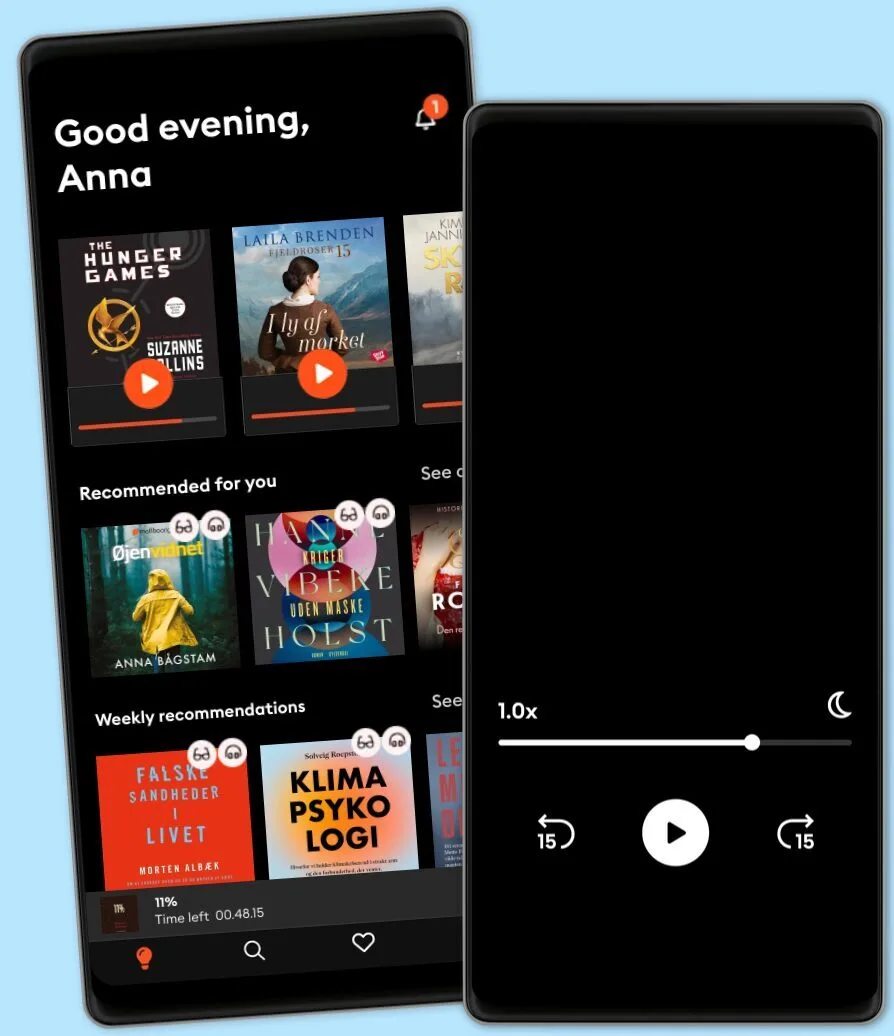Lyt når som helst, hvor som helst
Nyd den ubegrænsede adgang til tusindvis af spændende e- og lydbøger - helt gratis
- Lyt og læs så meget du har lyst til
- Opdag et kæmpe bibliotek fyldt med fortællinger
- Eksklusive titler + Mofibo Originals
- Opsig når som helst

Fairy Tales: The Origins, History, and Interpretations of the World’s Most Famous Fairy Tales
- Sprog
- Engelsk
- Format
- Kategori
Historie
In the early 16th century, when Europe was coming out of the Middle Ages and Germany was divided into several kingdom states, a girl named Margaretha von Waldeck was born in Hesse, a region of the German Empire covered by thick forests. Margaretha was the daughter of Philip IV of Waldeck, a nobleman marginally remembered in history books for advancing the Protestant Reformation in his domains. The Count had a daughter with Margaret of Frisia, but as in any era, wealth and a good name were not a guarantee of happiness: the Waldeck family owned copper mines (where misshapen and malnourished children worked; people called them "dwarfs"), but Philip's wife died four years after giving birth, leaving behind her daughter Margaretha. The child was breathtakingly beautiful according to testimonies of the time.
Shortly after being widowed, Count Philip married again, this time to Katharina of Hatzfeld, whose portrait is still preserved. The red-haired woman had short curly hair and —at least in the portrait that is available— a nasty grimace in her slightly off-centered mouth. And she hated the girl. At 16 she forced her to go to Belgium, where Margaretha met and fell in love with the son of the king of Spain, the future King Philip II, who was captivated by her beauty. The Spanish prince was six years older than Margaretha. When they began their brief romance, he was 22 and she was 16. The fairy tale ended in 1554 when Margaretha was poisoned by Spanish agents, who saw the impending marriage and considered that politically she had nothing to offer to Spain. The same year of Margaretha´s death, Philip ascended the throne. Proof that the girl was poisoned, writes German historian Eckhard Sander, can be seen in her testament, written hastily with shaky handwriting, as if she were trembling in agony.
Dense forests, evil stepmother, beautiful girl, dwarfs in mines, a prince and, eventually, poisoning (in that order). Sound familiar? Most will recognize the basic plot of Snow White and the Seven Dwarfs, one of the most popular fairy tales in history. Even if the passing of time (and Disney) embellished it with a thousand details, in particular the happy ending, this and other tales reflect the Sitz im Leben or setting in life in which fairy tales emerged. The stories, which were transmitted orally during the Middle Ages, are like fogged windows to the way of life, the kind of people and social conditions of the regions where they took their final shape. In some instances, such as Snow White and the Seven Dwarfs, they may be echoing historical facts. And the poisoned apple? Sander thinks that the lethal fruit was added later, during the stage of oral transmission, in remembrance of a man who really existed in Germany and was arrested for giving poisoned apples to children because he thought they were stealing from him.
For centuries, beautifully illustrated fairy tale volumes have rested innocently on kids´ night tables around the world, long ago relegated to the dubious honor of being branded as "children's literature." But every story is a file packed with information, and Cinderella, Snow White, Puss in Boots and Bluebeard have always intimated that perhaps they have more to tell besides "beautiful" stories, the same ones that animated the minds of several generations of children. Whether or not they had peaceful dreams is another matter, because even in their current versions, sterilized and with their original contents doctored, classic fairy tales are far from innocent stories for five year old children. Snow White, Cinderella, Sleeping Beauty and Rapunzel are full of violent jealousy between mothers and daughters, families so poor that they have nothing to put in their mouths, infanticide, tedious work, illicit sex, and traces of old religions. It is no wonder that fairy tales were originally collected without children in mind.
© 2025 Charles River Editors (E-bog): 9781475329018
Udgivelsesdato
E-bog: 20. juni 2025
Andre kan også lide...
Vælg dit abonnement
Over 1 million titler
Download og nyd titler offline
Eksklusive titler + Mofibo Originals
Børnevenligt miljø (Kids Mode)
Det er nemt at opsige når som helst
Premium
For dig som lytter og læser ofte.
129 kr. /måned
Eksklusivt indhold hver uge
Fri lytning til podcasts
Ingen binding
Unlimited
For dig som lytter og læser ubegrænset.
159 kr. /måned
Eksklusivt indhold hver uge
Fri lytning til podcasts
Ingen binding
Family
For dig som ønsker at dele historier med familien.
Fra 179 kr. /måned
Fri lytning til podcasts
Kun 39 kr. pr. ekstra konto
Ingen binding
179 kr. /måned
Flex
For dig som vil prøve Mofibo.
89 kr. /måned
Gem op til 100 ubrugte timer
Eksklusivt indhold hver uge
Fri lytning til podcasts
Ingen binding
Dansk
Danmark